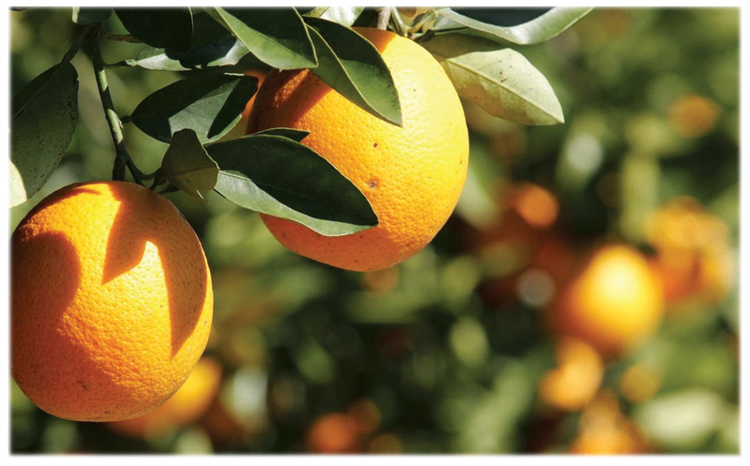Incentive programs and cutting-edge research keep growers planting
EVEN THOUGH it is predicted that Florida’s orange crops will decrease by millions this year, industry leaders remain optimistic about the future.
The most recent USDA adjustment to estimates for the 2014-2015 Florida orange crop showed a decrease of millions of boxes — no surprise to growers who have faced adverse conditions in the fields. The U.S. Department of Agriculture (USDA) May forecast estimate of the 2014-2015 Florida orange crop shows a decrease of 5.6 million boxes to 96.4 million. During the 2013-2014 season, Florida produced 104 million boxes of oranges.
“I would expect this kind of drop to put upward pressure on grower returns, and that’s a silver lining,” says Michael W. Sparks, CEO of Florida Citrus Mutual. “The good news is, we continue to produce the best citrus in the world even faced with the current pest and disease pressure.” The USDA makes its early estimate annually in October, and adjusts it every month as changes take place until the season ends in July.
In the report released May 15, early-mid varieties increased slightly to 47.4 million boxes. Valencia oranges dropped six million boxes to 49 million. “If realized, this forecasted production would be the least harvested since the 1989-1990 freeze season’s 42.1 million boxes,” the report indicates.
Other highlights from the report shows Florida all-orange production down five percent; Florida non-Valencia orange production up one percent; Florida Valencia orange production down 11 percent; Florida all-grapefruit production down one percent; Florida all-tangerine production unchanged and Florida tangelo production also unchanged.
The decreases in the report were not unexpected. “There is no doubt about it, we are certainly in challenging times,” states Sparks. “This decrease is not a surprise from what we’ve been hearing out in the field.”
Andrew Meadows, spokesman for Florida Citrus Mutual, says the industry remains optimistic and has many incentive programs in place to encourage growers to keep planting. Currently, the Florida citrus industry creates a $10.8 billion annual economic impact and employs nearly 62,000 people. Meadows points out that in order to continue to support the citrus infrastructure in Florida, some economists say growers need to plant more than 20 million trees over the next five years.
“Farmers want to farm,” he observes. “I’m not quite calling the future bright, but with several incentive programs designed to get trees in the ground and cutting-edge research to keep them alive and bearing fruit, light is at least peeking through the clouds in Florida.”
CREDIT
story by MARY TOOTHMAN

